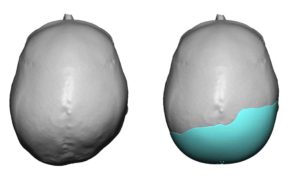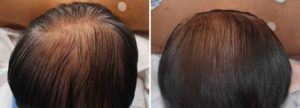Background: Flatness on one side of the back of the head is known as occipital plagiocephaly and can occur for a variety or reasons. In utero positioning and infant sleep positions are two of the most common etiologies. Regardless of its cause its presence is of aesthetic significance only when seen in an adult.
While people affected with this skull flatness are well aware that they have it, the camouflage of hair usually makes it a relatively non-issue. This is why it is the male patient who most commonly presents for its treatment as a result of short or thinning hair or the desire to shave their head. Such topical maneuvers will reveal to the public eye what the patient has always known. With a more exposed skull shape an improved symmetric appearance is desired. The hair issue does not exclude the female patient from seeking treatment for occipital plagiocephaly, they are understandably much less common.
Occipital plagiocephaly in adults is best treated with a custom skull implant. It has the best chance for optimal improvement of the skull asymmetry because the computer can match the flatter side to the fuller side by overlying the good side over the bad side and making the design. The elastic deformation property of the solid silicone implant also allows it to be inserted through the smallest possible scalp incision.
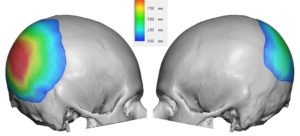
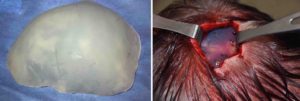
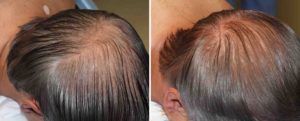
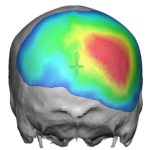
Case Highlights:
1) While plagiocephaly often affects the entire skull, its most noticeable effect is often on the back of the head. (occiput)
2) Flatness occurs on one side of the back of the head and rarely causes excessive protrusion of the opposite side.
3) Insertion of a custom skull implant can be done through a small incision over the nuchal ridge on the back of the head.
Dr. Barry Eppley
Indianapolis, Indiana



